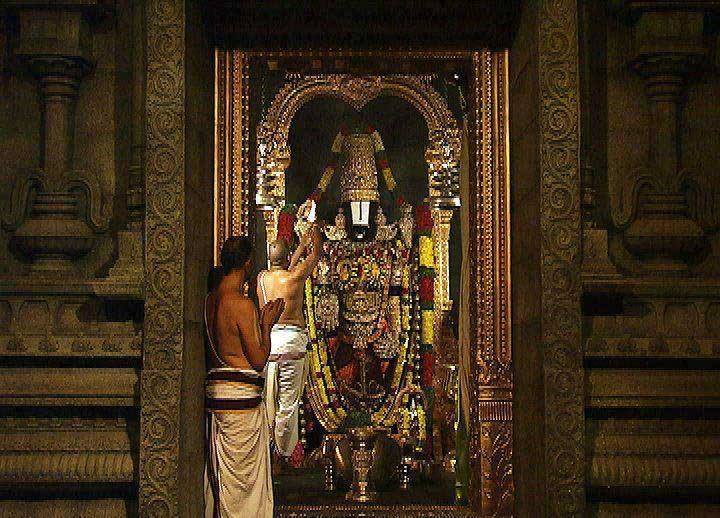The term Suprabhatham is from the Sanskrit language that literally means the ‘Auspicious Dawn’ and belongs to the Suprabhatha Kaavya genre.. It is a genre that consists of hymns or verses and is used to wake up the holy Hindu Gods.
Suprabhatham is normally composed by musicians in the Vasantha Tilaka meter.. The most popular among all the Suprbhathams is the Sri Venkateswara Suprabhatam, a series of hymns written, in poetic form, by Pratvada Bhayankara Sri Anantacharya, in 1430 A.D..
This work of poetic art was meant for singing praises of holy Lord Sri Venkateswara, while waking Him up early in the morning, in the sacred Tirumala temple, everyday.
Sri Anantacharya is also known as the Ramanujacharya of Kanchipuram.. It is here, in this holy Temple town, that fourteen of the 108 divya desams (holy abodes of Lord Vishnu) are located..
All in all, Sri Venkateswara Suprabhatam contains four major parts namely Suprabhatam, Sri Venkateswara Stothram, Sri Srinivasa Prapatti and the Mangalaasasanam.
All the Vedic scholars, all the brahmins, all the archakas and all the purohiths, belonging to the Tirumala Tirupati Devasthanam, stand at the main entrance of the Garbha Griha (sanctum sanctorum) of the Lord Sri Venkateswara temple in Tirumala, at 3 a m every day, and recite Sri Venkateswara Suprabhatam, in chorus, to wake up the holy Lord.
Called Suprabhata Seva, this is a sacred ritual in practice, in the holy Tirumala temple, ever since Sri Venkateswara Suprabhatam was written.
What Is The Relationship Between Sri Venkateswara Suprabhatham And Valmiki Ramayan
Sri Ananthacharya had taken the first stanza of Suprabhatham “Kausalya supraja Rama purva sandhya pravarthathe.. Uththishta narasardhula karthavyam daivamahnikam” from the Valmiki Ramayan.
These lines are found in the Bala Kanda section of the Valmiki Ramayan, wherein Sage Viswamitra is said to have used these lines to wake up the Ayodhya Prince Sriram, who was sleeping in his Hermitage at that time.
This hermitage was located at the confluence of the Holy Rivers Ganges (Ganga) and Sarayu.
This confluence of Ganges and Sarayu, mentioned by Valmiki in Ramayan, is currently located in the Jaiprakash Nagar village (old name, Sitab Diara village) of the Ballia District in Bihar.
Since renowned social activist Jaiprakash Narayan, founder of the Sarvodaya Movement, was born in this Bihar village, it has been renamed as Jaiprakash Nagar.
It was at this place that Sage Viswamitra had spoken these amazing lines for the first time and have a mention in the Bala Kand of Ramayan which was thousands years later reused by Pratvada Bhayankara Sri Anantacharya for his magnum opus, Sri Venkateswara Suprabhatham.
Sri Ananthacharya was a great devotee of Lord Vishnu and would strongly believe that Lord Sriram and Lord Venkateswara are the reincarnations of Lord Vishnu.. He therefore wanted to show his devotion towards his Sriram by using these lines from the Bala Kand, as they are, as the opening lines of his Suprabhatham.
Finally, here’s the English meaning of Kausalya Supraja Raama, the lines of both from the Bala Kanda and Sri Venkateswara Suprabhatham..
“..Oh Rama, the great son of Kausalya, Twilight is approaching in the East.. Wake up, oh courageous man, its time to perform the daily divine rituals..”
Love
Narrenaditya Komaragiri
narrenaditya@tirumalesa.com
To know more about the author please click here
